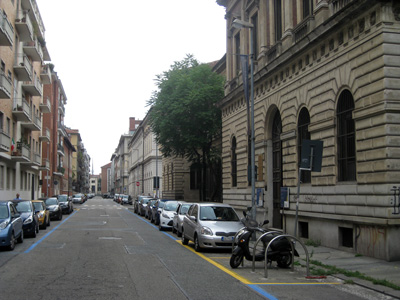Research visit to the “Museo di anthropologica criminale”, the Lombroso Museum for Criminal Anthropology in Turin/Italy, August 2014.
The navigation system leads us into the busy city of Turin in northern Italy, past huge shopping malls and petrol stations, past the derelict illegal housings of migrants, along the river and through the scenic city centre and on to a quieter part of town where the museum occupies a historical university building. The collection was created by the Italian physician and criminologist Cesare Lombroso in 1892 and has continuously existence ever since. It moved back to its former location the “Palazzo degli Instituto Anatomico” and was redone recently, explanations were added and multi-media installations guide the visitor, but the artefacts and the presentation are still in the vein of the famous advocate for positivist criminology.
The in the pompous hallway of the late nineteenth century building that was constructed as a “city of science” a video installation is installed below the ceiling. The inner side of the circular object shows portraits and specimen from the collection, a moving projector throws similar images onto this screen and creates temporary superimpositions of different faces. This introduction to visual material of the collection has striking similarities to the technique of composite photography that was developed as a mode of scientific visualisation by Lombroso’s British contemporary Francis Galton. The installation might also be an illustration of a scientific method, direct visual comparison.
In a dark, wooden furnished cinema-style anteroom a double-screen video installation introduces the time of Cesare Lombroso, the turn of the 19th century. Positivist to the Bone: Lombroso Museum weiterlesen




